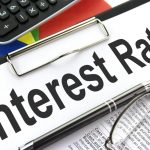Affordable homes is the buzz word as people try to live within their means
With housing being one of the biggest expenditure many expect to invest in, it is crucial for both homeowners and tenants to determine how much of their income they should set aside for housing costs, such as mortgage payments or rent along with utilities, maintenance charges or homeowners insurance. But how does one ensure that the housing costs are affordable?

Some use the Home Price-Income ratio (HPI) to search for affordable homes, where a figure of 6, for instance, would indicate that the property being purchased is priced at six times the buyer’s current annual income. There is however no international consensus on what figure signifies whether a property is affordable or not.
In some leading international cities, such as Hong Kong or London, the HPI could be quite high, with some sources putting the HPI for Hong Kong in the double digits. In other countries, in areas away from centres of population or economic activity, the HPI could be lower.
In Singapore, HDB uses the Debt Servicing Ratio (DSR), which it says is a more accurate indicator of affordable homes. The DSR refers to the proportion of the monthly household income set aside for housing installments.
The DSR measurement takes into account interest payments, which the HPI does not. It is calculated on an assumed 30 year loan, and the figure would rise if the loan tenure were shortened. Correspondingly, a working household may reasonably expect salary increases over time, and, assuming a fixed tenure period, the actual DSR in later years of repayment may fall.
But regardless of if you are renting your first apartment or whether have been a homeowner for years, it can be difficult to ascertain how much you can afford to spend on housing each month. Here are a few basic tips to help you figure out a monthly budget on housing, based on your income.
1. To have affordable homes, do not spend more than 30-40 per cent of your income on housing costs
Table of Contents
As a general rule of thumb, housing experts advise that homeowners or tenants should not spend more than 30-40 per cent of their gross monthly income on housing costs. This is so that individuals can afford basic necessities like food, healthcare, and transportation each month while being able to set aside some personal savings.
This means that a homeowner or tenant earning $50,000 each year should spend up to $1,250 to $1,667 monthly for housing costs to have affordable homes.
2. Tenants: Be mindful of living within your budget
While some luxuries may seem worth it in the present, it may not always be the most cost-effective in the long-run, especially for tenants who do not own homes. For starters, tenants should consider living in a less expensive neighbourhood to keep rent manageable.
This can make a big difference: the median price of a 3-room flat in the Central region of Singapore is over $2000 while those living farther from the city centre pay as low as $1,400 for a flat the same size.
Further, tenants could consider downsizing to slash the housing costs they have to fork out their hard-earned money for each month.
Downsizing to a median 2-room flat in Bukit Merah and Queenstown is respectively 23 per cent and 32 per cent less expensive than a median 3-room apartment in the same regions.
Tenants may also like to consider moving in with roommates to halve their housing costs.
3. Homeowners: Don’t Forget About the Total Cost of Homeownership
Some homeowners may rejoice after learning that the recommended maximum amount for spending on monthly housing costs is 30-40 per cent of one’s income, since this may mean that a homeowner saddled with a $300,000 home loan will only need to fork out $1,200 to S$1,500, each month – an amount that is considerably cheaper than what tenants would have to pay as rent for similar flats.
These homeowners, however, should be warned not to forget the total cost of homeownership when drawing up their budget.
First, it is prudent is save up for about 20 per cent of the price of the home to make a down payment before buying the home. It is crucial to be mindful of this, since many may be able to afford mortgage payments but may not have enough personal savings to make a proper down payment.
Homeowners should also be sure that they can afford the various costs that come with homeownership, that can run up to a thousand dollars a month for the average home. These costs include home insurance, property tax, town council fees, the cost of electricity, maintenance costs, etc.
In conclusion, the 30-40 per cent cap on monthly spending on housing costs is a good starting point for homeowners and tenants alike. It must be noted, however, each budget is different and that this maximum limit is simply a guideline.
For example, new working adults could find that they are not able to set aside 30 per cent of their income on housing while those generating high incomes can afford to spend more of their income on their home. There are always exceptions to the rule. What is important is to ensure that your budget works for you and to ensure that you spend appropriately on housing while having enough to meet your other primary necessities.
As a rule of thumb, a home affordability assessment and best home loans will put your heart at ease. You should also consider the services of mortgage loan experts as their services are always free.






